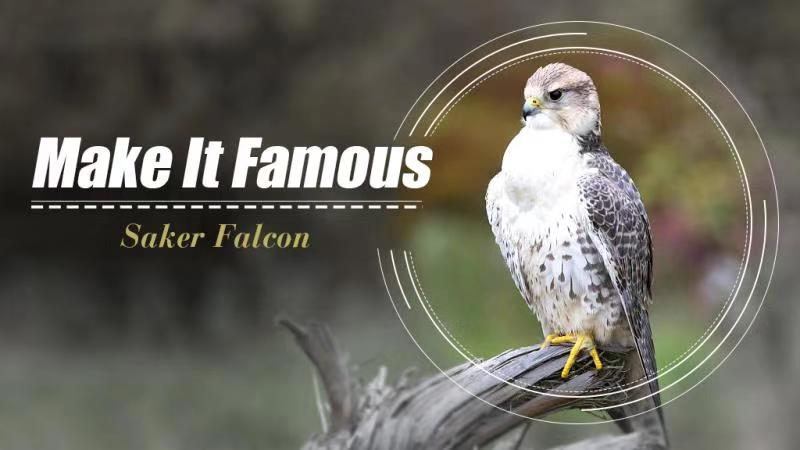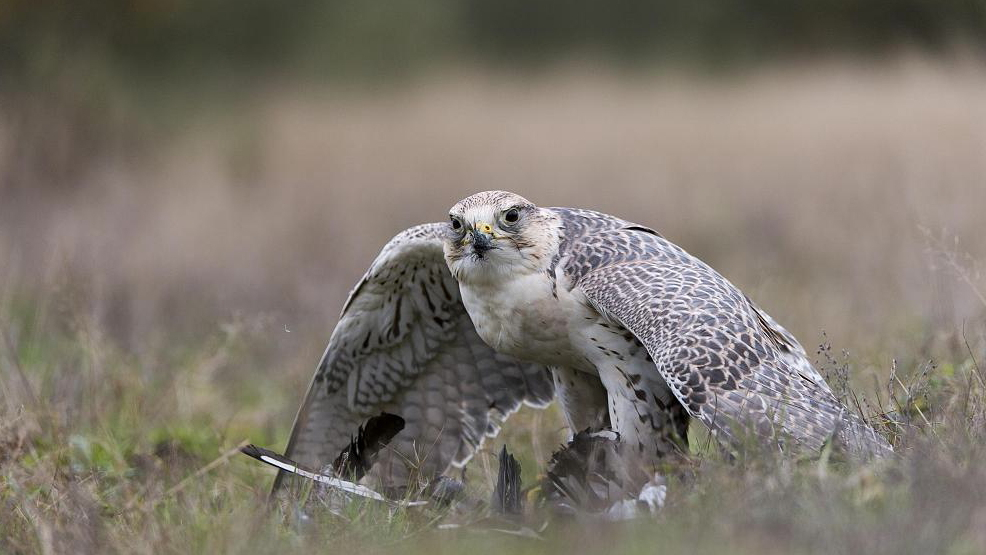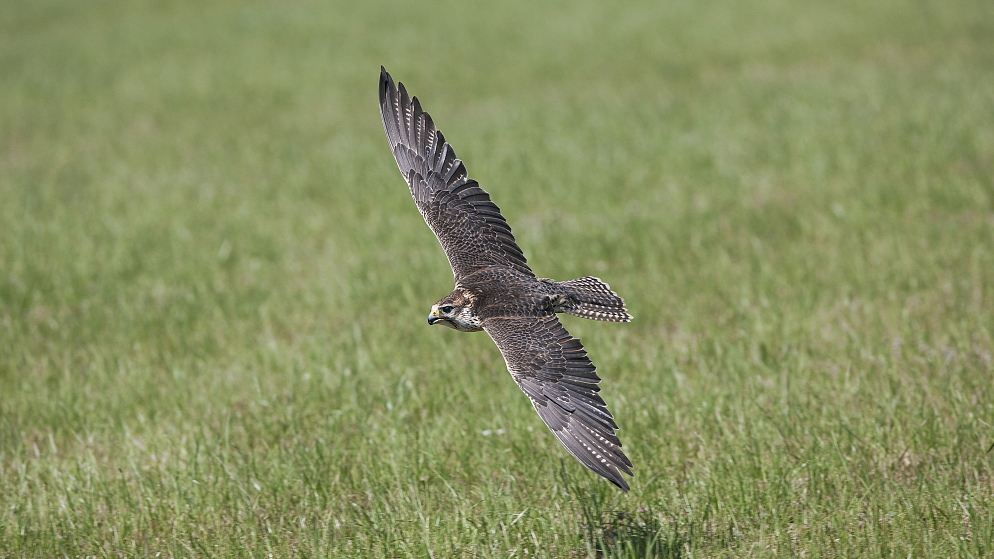
Animal
12:19, 15-Mar-2019
Make it famous: Top hunter in the sky
By Zhang Hao
00:33

The chance for prey to escape death when targeted by a saker falcon is close to zero, given its strong talons and curved, sharp beak. They are so notorious for their ruthless, quick and precise hunting skills that no other birds are stupid enough to challenge the saker falcons' reputation in the sky.

A saker falcon with prey. /VCG Photo
A saker falcon with prey. /VCG Photo
The saker falcon feeds on small mammals and birds. Unlike the golden eagle who swoops down when any prey comes into sight, the saker falcon prefers to descend to a lower height, pull together its wings at back and glide after the prey at the speed of 320 km/h. It uses the talons to capture the animal and beak to and attack the spine and paralyze the prey, whose death is almost certain because of inflicted injury even if escapes immediate capture.
Male falcons usually weigh 850 grams and stand 45 cm on average, their wingspan can reach 100 cm to 118 cm. Female falcons are mostly larger and heavier than the male ones. Consequently, female falcons appear to be even more fierce than male.

A flying saker falcon. /VCG Photo
A flying saker falcon. /VCG Photo
When it comes to breeding season, male falcons usually go to great lengths to impress the females. They will show off their hunting techniques by shaking the captured prey while flying high or circling around the female while making a loud noise. If this doesn't work, they upgrade their seductive skills by gifting the female falcons the prey they caught.
The history of taking advantage of the saker falcon to make human hunting easier can be traced back thousands of years. Owning a saker falcon was once a symbol of wealth and social status. Consequently, vanity prompted poaching which resulted in the decrease of this falcon's population.
The population of the species is now between 12,200 to 29,800, and the bird has been listed by the IUCN as an endangered species. The creature used to be common in many countries of the world but has become rare and restricted to China, central Asia, central Europe and East Africa.
Make It Famous
During this year's Two Sessions, a political advisor proposed to update the List of Wild Animals under State Priority Conservation, which has been changed only once in 30 years. Although the country has made great achievements in protecting endangered species such as the giant panda, Tibetan antelope and crested ibis in the last decades, human activities, resource utilization and climate change are contributing to the destruction of the habitats of certain animals.
In this series, we will learn about the unfamiliar endangered animals living in China and how people and organizations in China are dedicated to protecting them.
(Cover image via CGTN)
(If you want to contribute and have specific expertise, please contact us at nature@cgtn.com.)

SITEMAP
Copyright © 2018 CGTN. Beijing ICP prepared NO.16065310-3
Copyright © 2018 CGTN. Beijing ICP prepared NO.16065310-3